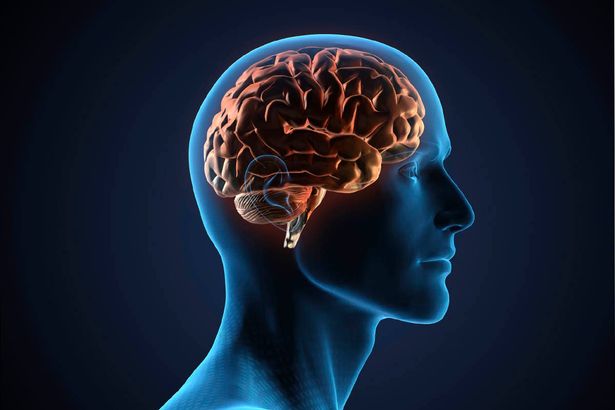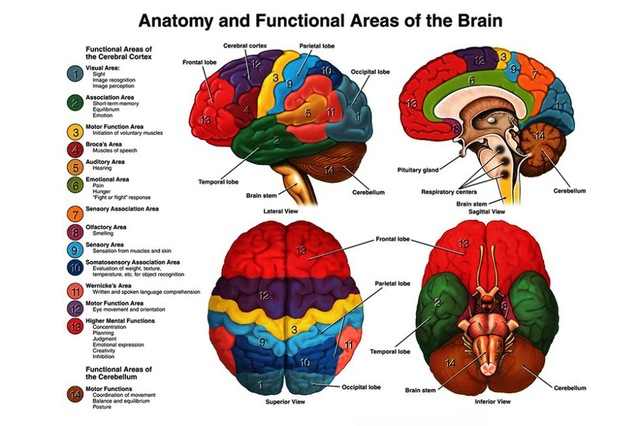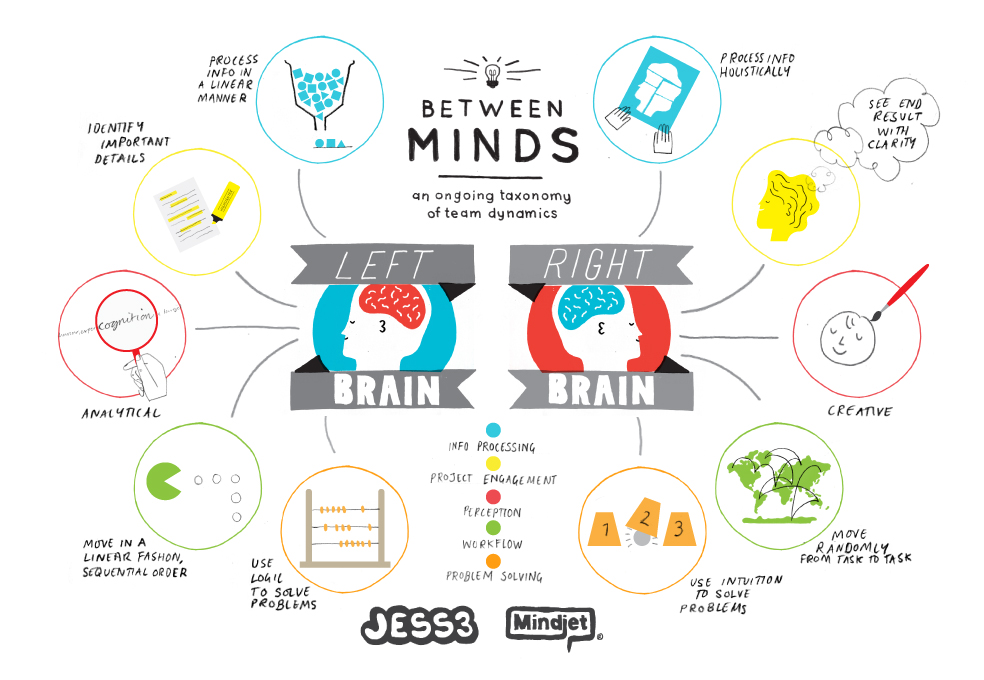
The Human Brain.. Facts, Anatomy and More!
The human brain is the command center for the human nervous system. It extradites signals from the body’s sensory organs and outputs information to the muscles. The human brain has the same basic structure as other mammal brains but is larger in relation to body size than any other brain.
Facts about the human brain
- The human brain is the largest brain of all vertebrates relative to body size.
- The human brain is one of the fattest organs in the human body, it comprises 60% of fat.
- The average male brain volume of 1,274 cm3
- The average female brain has a volume of 1,131 cm3.
- The brain makes up about 2 % of a human’s body weight.
- The cerebrum makes up 85 % of the brain’s weight.
- It contains about 86 billion nerve cells known as ‘neurons’ — (the “gray matter.”)
- Human brain has the capacity to generate approx. 23 watts of power when awake.
- These neurons are connected by trillions of connections, known as synapses.

Anatomy of the human brain
The largest part of the human brain is the cerebrum, which is divided into two hemispheres, Underneath lies the brainstem, and behind that sits the cerebellum. The outermost layer of the cerebrum is the cerebral cortex, which consists of four lobes: the frontal, parietal, temporal and occipital.
Like all vertebrate brains, the human brain develops from three sections known as the forebrain, midbrain and hindbrain. Each of these contains fluid-filled cavities called ventricles. The forebrain develops into the cerebrum and underlying structures; the midbrain becomes part of the brainstem; and the hindbrain gives rise to regions of the brainstem and the cerebellum.
The cerebral cortex is greatly enlarged in human brains and is considered the seat of complex thought. Visual processing takes place in the occipital lobe, near the back of the skull. The temporal lobe processes sound and language, and includes the hippocampus and amygdala, which play roles in memory and emotion, respectively. The parietal lobe integrates input from different senses and is important for spatial orientation and navigation.
The brainstem binds to the spinal cord and consists of the medulla oblongata, pons and midbrain. The primary functions of the brainstem include relaying information between the brain and the body; supplying some of the cranial nerves to the face and head; and doing critical functions in controlling the heart, breathing and consciousness
Between the cerebrum and brainstem lie the thalamus and hypothalamus . The thalamus relays sensory and motor signals to the cortex and is involved in regulating consciousness, sleep and alertness. The hypothalamus connects the nervous system to the endocrine system — where hormones are produced — via the pituitary gland.
The cerebellum lies beneath the cerebrum and has important functions in motor control. It plays a role in coordination and balance and may also have some cognitive functions.

Left brain vs. right brain
The human brain is divided into two hemispheres, the left and right, connected by a bundle of nerve fibers called the corpus callosum. The hemispheres are strongly, though not entirely, symmetrical. The left brain controls all the muscles on the right-hand side of the body and the right brain controls the left side. One hemisphere may be slightly dominant, as with left- or right-handedness.
The popular notions about “left brain” and “right brain” qualities are generalizations that are not well supported by evidence. Still, there are some important differences between these areas. The left brain contains regions involved in speech and language known as the Borca’s area and Wernick’s area respectively and is also associated with mathematical calculation and fact retrieval, Holland said. The right brain plays a role in visual and auditory processing, spatial skills and artistic ability — more instinctive or creative things, Holland said — though these functions involve both hemispheres. “Everyone uses both halves all the time,” he said.

